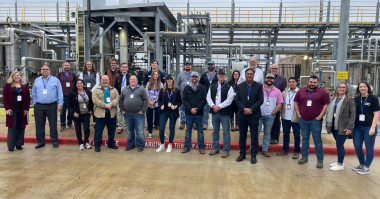The progression of technology such as analytics and data gathering offer all industrial companies, including those in oil and gas production, the opportunity to free up man hours and reduce human error through the automation of various tasks. Many in oil and gas production have already taken advantage of these opportunities but may not be taking full advantage of all digitizing has to offer.
According to McKinsey and Company, the highest impact opportunities lie within upstream production operations. Four of the best areas include:
- Reservoir modeling – Including real time feedback in order to optimize production.
- Product Optimization – Using advanced tools like production flow analytics during the drilling and wells process.
- Reliability and Preventive Maintenance – This includes the use of advanced technology for the purpose of monitoring equipment condition and maintenance operation planning.
- Process Control Automation – Used for business operations, this is often an overlooked aspect wherein the automation of continuous processes are carried out at a substantially lower cost than having them done manually.
Digitizing Oil Fields
With an estimated 100 million barrels of oil needed a day in 2015 combined with a shortage of skilled international workers, the digital oil field is becoming more of a necessity and ultimately a reality. New software is available to capture the daily operations and behaviors of rigs and is used to manage the entire production lifecycle. These tools allow for a comprehensive view of the reservoir and the wellbore which allows both engineers and managers to receive real time data from anywhere in the world from down-hole pressures to drill directions to rotational speeds.
Automation of Oil & Gas Production
While the highest performing companies constantly maintain quality operations, optimize equipment, and have well-organized shutdowns in both planning and executing, other oil and gas operations have trouble filling the gaps given the difficulty of keeping all production components working together. One of the most significant barriers is the lack of automation.
Benefits of Automation in Oil & Gas Production
Through the use of various automation tools, oil and gas production companies can overcome three major industry challenges:
- Complex operations – No matter what the volume requirements or location elements, reliable remote and automated operations can assist engineers abroad in addition to local field workers in making the most of their assets.
- Minimizing Risk – The use of automation can also be used to predict and prevent any incidents which endanger the health, safety, or environmental impact of any operation through the practice of monitoring equipment condition, scheduling shutdowns, and production control.
- Bridging the Gap Between Experience and Talent – The upcoming retirement of many oil and gas production workers combined with the rise of international workers trained in a different manner stands to leave the industry with high demand and low supply of talent. Automation can codify many routine analyses, the decision support process, and even provide for an automation of them.
Challenges of Automation in Oil & Gas Production
Even though the benefits of automation are well-known, designing, integrating, and carrying out an automation strategy can be extremely difficult. With up to 40,000 different data tags on an offshore production platform, the gathering and analysis of all the data can be overwhelming. However, oil and gas production companies who can successfully implement automation to improve efficiency by just ten percent can gain from $220 million to $260 million on a single brownfield asset. Automation can also yield impressive results in greenfield assets, upstream production operations, and can even be used to extend the life in declining assets.
Currently both large and small oil and gas production companies are already taking advantage of these tools and are finding that they can quickly outgrow competitors who don’t. Those who successfully use these tools as part of their daily operations stand to meet the current and upcoming challenges the industry has to offer with both speed and efficiency.





Comments